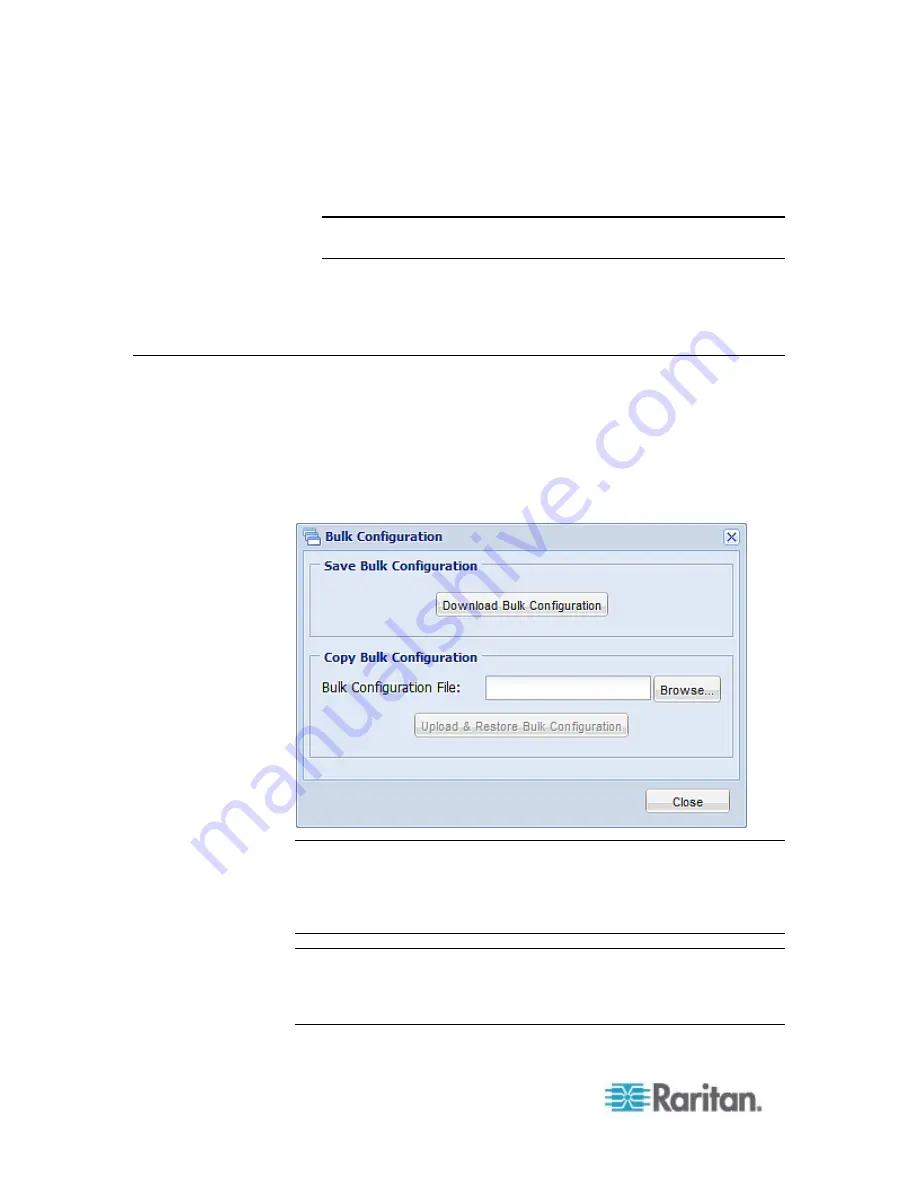
Chapter 6: Using the Web Interface
294
2. Click the desired asset sensor in the left pane. The page specific to
that asset sensor opens in the right pane, showing the asset sensor
settings and information of all rack units (tag ports).
Note: You can also access this dialog by double-clicking the asset
sensor shown on the Dashboard page.
3. Click Extended Device Info, where the asset sensor data is
displayed.
4. Click Close to quit the dialog.
Bulk Configuration
The Bulk Configuration feature lets you save the settings of a configured
PX device to your PC. You can use this configuration file to copy that
configuration to other PX devices of the same model and firmware
version.
You must have the Administrator Privileges or "Unrestricted View
Privileges" to save and copy the PX configurations.
Note: No device-specific data is saved to the Bulk Configuration file,
such as environmental sensor or certain network settings. To back up or
restore a specific PX device's all settings, use the Backup/Restore
feature instead. See
Backup and Restore of PX Device Settings
(on
Tip: For the alternative to configure multiple PX devices, see
Bulk
Configuration or Firmware Upgrade via DHCP/TFTP
(on page 514).
For the other alternative, see
Configuration or Firmware Upgrade with
a USB Drive
(on page 503).
Summary of Contents for PX2-1000 SERIES
Page 5: ......
Page 71: ...Chapter 4 Connecting External Equipment Optional 52...
Page 231: ...Chapter 6 Using the Web Interface 212 8 Click OK...
Page 589: ...Appendix I RADIUS Configuration Illustration 570 Note If your PX uses PAP then select PAP...
Page 594: ...Appendix I RADIUS Configuration Illustration 575 14 The new attribute is added Click OK...
Page 595: ...Appendix I RADIUS Configuration Illustration 576 15 Click Next to continue...
Page 627: ...Appendix K Integration 608 3 Click OK...
Page 647: ...Index 629 Z Zero U Connection Ports 74 Zero U Products 2...






























